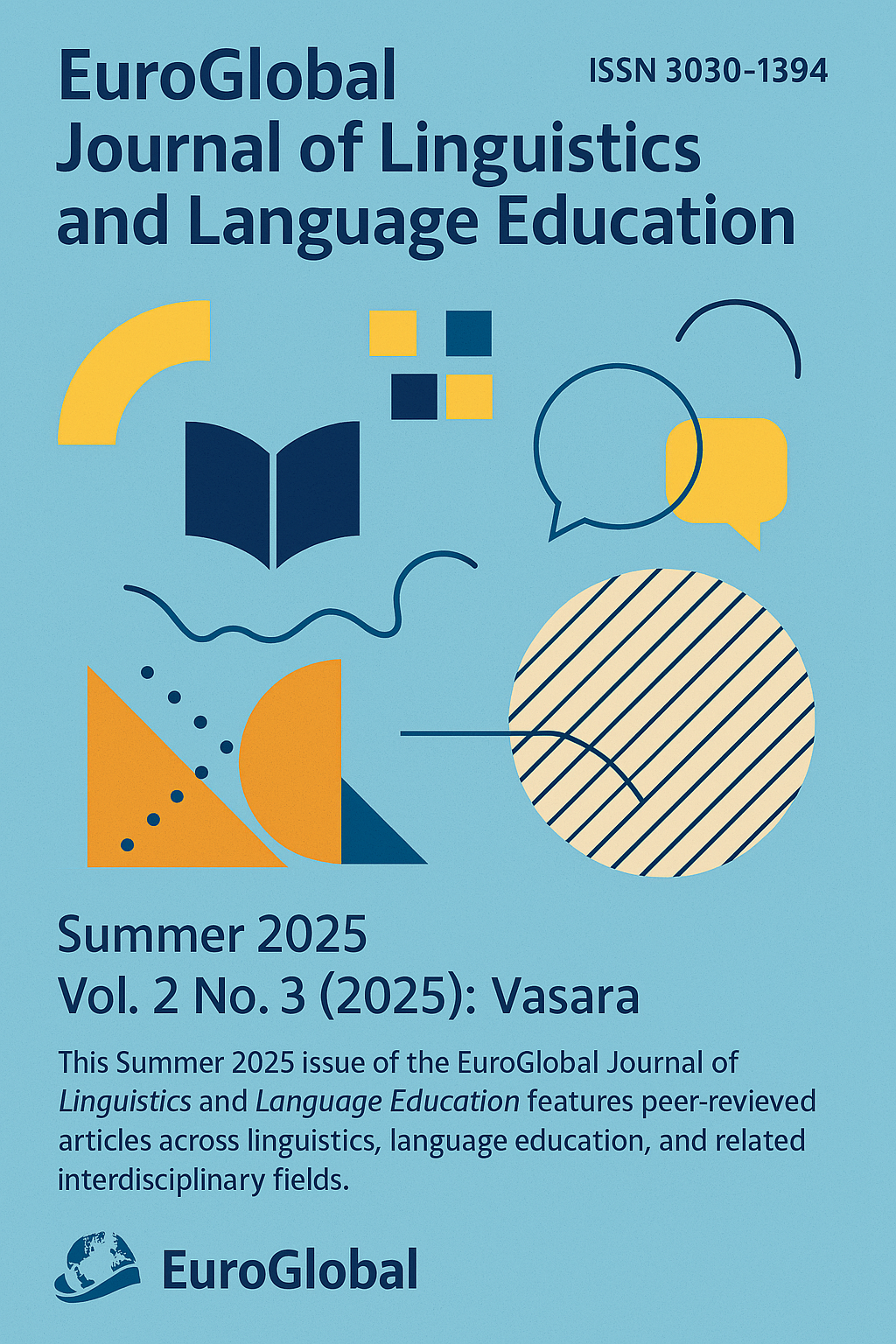Theatrical Structures and Performance Traditions in Azerbaijani Folklore
DOI:
https://doi.org/10.69760/egjlle.2500199Keywords:
Azerbaijani folklore, national theatre, Ashiq tradition, ritual performance, oral literature, dramatic structureAbstract
This article examines the theatrical structures and performance traditions embedded within Azerbaijani folklore, proposing that oral narratives, ritual practices, and musical storytelling constitute a form of proto-theatre. Drawing on theoretical insights from performance studies and folklore research—particularly the works of Richard Bauman and Victor Turner—the study frames Azerbaijani folklore not only as a repository of cultural heritage but also as a dynamic performative system. Through the analysis of epic tales (dastans), lyrical folk songs, the Ashiq bardic tradition, and seasonal rituals, the article identifies key dramatic elements such as structured plots, character archetypes, stylized dialogue, spatial symbolism, and musical integration (Sadikhova, 2022).
Special attention is given to the Ashiq as a multifaceted performer, whose blend of narration, music, improvisation, and audience interaction represents a theatrical tradition rooted in oral culture. The article also explores how Azerbaijani playwrights like Huseyn Javid and Jafar Jabbarly adapted folklore into modern theatrical forms, especially during the Soviet and post-Soviet periods, contributing to the development of a distinct national stage.
By situating folklore within a theatrical framework, this study underscores the richness and relevance of indigenous performance traditions. It calls for further research in comparative folklore theatre, field documentation, and the integration of folk forms in contemporary education and cultural preservation.
References
Ahmedova, G. (2023). The first Azerbaijani theater founded in Irevan–past and present of Irevan State Azerbaijan Dramatic Theatre. Philology and Art Studies, (1).
Ahmadova, G. (2023). Worldly significance of theaters: Irevan State Azerbaijan Drama Theater. Scientific Journal of Polonia University, 58(3), 10-14.
Akimbek, A., Khozhamberdiyev, O., Islambayeva, Z., Mukan, A., & Nursultan, Y. (2025). The Transformation of Kazakhstan’s National Classics in World Performing Arts. Open Cultural Studies, 9(1), 20250049.
Ayhan, A. (2025). Museum of Monologues: Contemporary Theatre: Translating Cultural Memory into Performance as a Site of Experiential Translation. In The Translation of Experience (pp. 110-127). Routledge.
Babayev, J. (2022). Characteristics of online learning. POLISH JOURNAL OF SCIENCE Учредители: Громадська Організація" Фундація Економічних Ініціатив"= Общественная Организация" Фундация Экономических Инициатив",(50), 67-68.
Babayev, J. (2022). Online versus offline learning. ZNANSTVENA MISEL Учредители: Global Science Center LP,(66), 24-25.
Baymuratovna, A. D. (2025). Historical Formation of The Samarkand School of Epistle-Writing and The Place of Bakhshi Performance Traditions. International Journal of Pedagogics, 5(03), 59-63.
Садыхова, С. Н. (2015). Hussein Aliyev’s caricatures in satirical journals. European research, (10 (11)), 135-137.
Dadashova, S. (2025). Azerbaijani Literature and the Gendered Narratives of Nationhood: Weaving Identities. Taylor & Francis.
Farzaliyeva, E., & Seyidov, T. (2025). The Role of Theatre in the Formation of National Ideology. EuroGlobal Journal of Linguistics and Language Education, 2(3), 64-73.
Gulkhara, A., & Farzaliyeva, E. (2025). Theatre as a Reflection of Social Change: How Dramatic Arts Capture Cultural Shifts and Historical Transformations. Acta Globalis Humanitatis et Linguarum, 2(1), 254-261.
İyibozkurt, E. B. (2025). Pioneering Turkish Muslim Actresses: Afife Jale and Bedia Muvahhit's Trajectories in the Turkish Stage. Theatre Survey, 66(1), 74-94.
Mehri, M. G. (2017). The Role Of Folk Literature Traditions In The Formation Of The Structure Of Story. Мова І Культура, 215.
Misirzade, S. (2025). The Shaping of the Azerbaijani National Identity under the Russian and Soviet Sovereignty.
SADIGOVA, S. N. (2021). Artistic features of patterns on nakhchivan carpets. In European Scientific Conference (pp. 169-172).
Sadikhova, S. (2024). Contrasting Splendor: A Comparative Study of Baroque and Classical Styles in Visual Arts. Acta Globalis Humanitatis et Linguarum, 1(2), 144-154.
Sadikhova, S. (2023). MANNERISM IN ITALIAN ART IN XVI-XVII CENTURIES. Norwegian Journal of development of the International Science No, 120, 15.
SADIKHOVA, S. N. (2022). PRINCIPLES OF CREATION OF SOME GEOMETRIC ORNAMENTS AND THEIR MEANINGS. In WORLD SCIENCE: PROBLEMS AND INNOVATIONS (pp. 300-302).
SADIKHOVA, S. (2022). NATIONAL PATTERN ELEMENTS ON THE CARPETS OF PEOPLE'S ARTIST OF AZERBAIJAN KAMIL ALIYEV. ANNALI D’ITALIA Учредители: Global Science Center LP,(29), 3-6.
Sabir, B. J. (2023). The values as a content in person-oriented education. International Journal of Philosophical Studies and Social Sciences, 3(5), 130-135.
SAHATIMEHR, A., SAHATIMEHR, T., & MOSSAZADEH, K. (2010). PROTECTION AND CONSERVATION OF FOLKLORE AND CULTURAL HERITAGE FOR REGIONAL COOPERATION. AZBRBAYCAN MİLLİ ELMLBR AKADEMİYASI, 161.
Shahmuradova, N., & Saitova, G. (2024). FEATURES OF THE CHOREOGRAPHIC ART OF AZERBAIJAN: CONCEPT OF TRAINING AND IMPROVEMENT OF PERFORMANCE SKILLS. Central Asian Journal of Art Studies, 9(3).
Öztek, E. (2025). Through the glass wall: architectural insights into the feminist Turkish play On İkinci Ev. Studies in Theatre and Performance, 45(1), 45-63.
Downloads
Published
Issue
Section
License
Copyright (c) 2025 EuroGlobal Journal of Linguistics and Language Education

This work is licensed under a Creative Commons Attribution-NonCommercial-NoDerivatives 4.0 International License.





